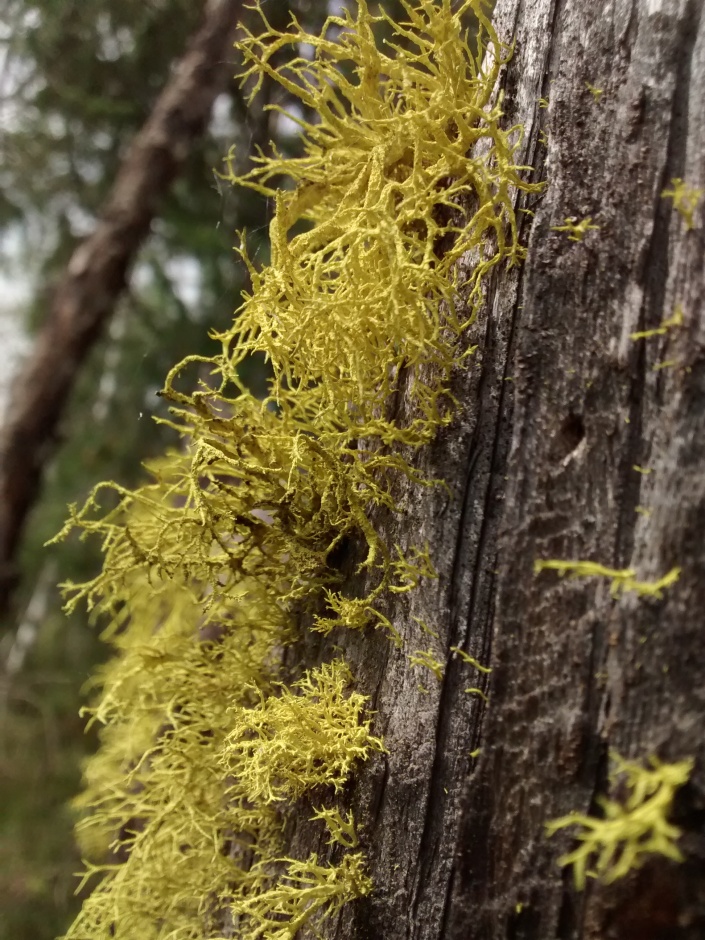Birds, Flowers, Frogs, Bats…..Lichens!

It’s summer! We are in the season of Frog Walks, night time Bat Surveys, Birding Events, star gazing nights and more. The extravagant displays of color and sound, the always changing feast for the eyes is at it’s best in the Kickapoo Valley Reserve.
Many of us review our familiarity with birds and plants we consider old friends, as they reappear each spring and summer. What have you learned recently, that is completely new, about the ecosystem you are part of? Now that you know at least some of the birds, flowers, trees, bats, mammals and even fungi and insects, what else could be here?

Learning about lichens and their relatives in the fungi world is a good place to start because most of us have not thought much about these neighbors. An essential part of the natural world as we know it is made up of fungi and LICHENS. Lichens influence and in some ways may control the environment. Lichens are everywhere- rock, tree surfaces, and on the ground. Lichens are at least as diverse as any other group of organisms. Lichens are present every day of the year. Lichens may be enjoyed as you canoe down the river, walk on a trail, or sit under a tree watching birds. Lichens are colorful, beautiful, endlessly varied and so easy to get close to.
Take some time to read this website’s information, look at the lichen books at the KVR while you relax in the Visitor Center, and go for a lichen hike with a friend, or give me a call and we’ll go visit Lichen Land to see who’s there this time of year.
Join the KVR Lichen Project this year. Learn about lichens; the world of nature that you think you know will expand dramatically. Becoming familiar with lichens opens a doorway to the ‘web of life’ that all are part of. We mostly see individual parts; the bird, the tree, the river….but none of those are what they are without all the others they relate to aand interact with. Lichens are quintessential collaborators, cooperators, adaptors. Many of the other residents you are familiar with are dependent on lichens to some degree. What can we learn about those relationships?
While the lichens moderates the climate for the tree it lives on, the tree moderates the climate for the earth under it and all that live there, and moderates the air space it occupies, affecting all the air interacts with, on so on the web spreads. How many more relationships like this surround us? What happens when those interactive webs are changed or destroyed? What can we do to steward the health and survival of webs of life we do not understand well? How can we learn to see these connections better, to foster our understanding of what is going on around us?
Learning about lichens and becoming familiar with them as part of the beautiful world you interact with on your hikes and other activities in the green world is one way to enlarge your perspective and through that, your effectiveness in caring for both the KVR and the larger green world around us.
Lichens are a bit harder to find in the depths of summer greenery. Look on exposed rocks especially along the river. Lichens as well as mosses and liverworts abound on river cliffs. The lower parts of tree trunks are always easy to observe and have many lichen species growing on them. Notice the different lichens on different tree species. There are also some lichen species that seem to grow on many tree species. What could be the reason some grow almost everywhere and others are very particular about their location?
Wet weather wakes up lichens. Their colors are bright and they are actively photosynthesizing and reproducing. Take a picture, and compare it with the same lichen at another time of year, when conditions are dry. The lichen may be almost unrecognizable as the same one you saw on a wet day.
Enjoy the lichens wherever you find them this summer. Post a message here if you see any lichens you’d like to share!



